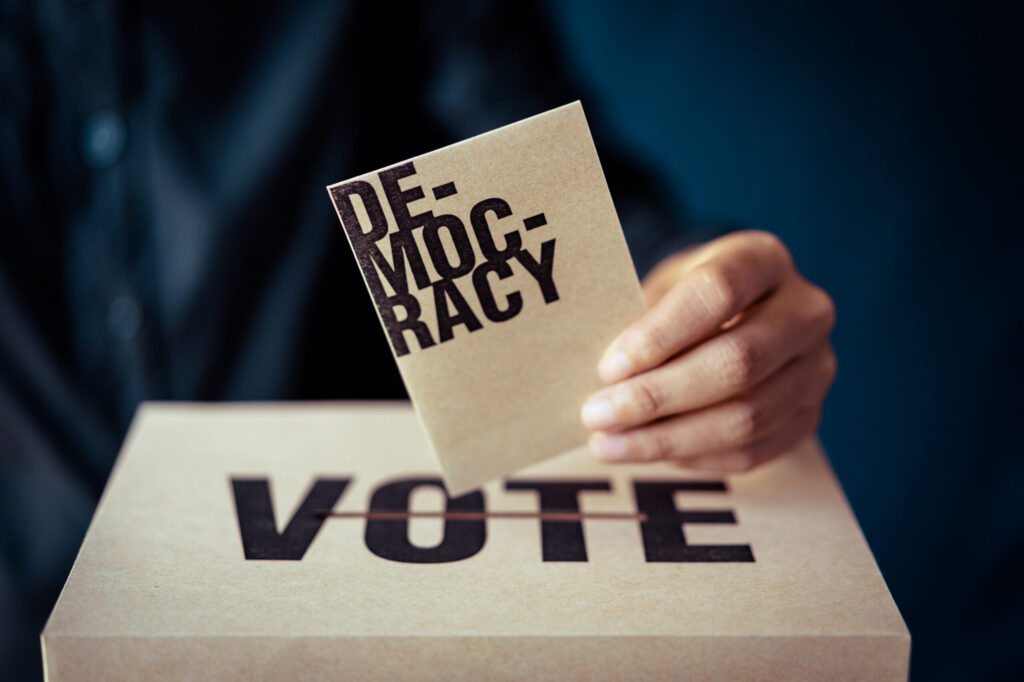
(Getty Images)
An analysis of Missouri election result maps shows a steady shift to Republicans, including smaller movement in urban Democratic strongholds.
At the same time, the suburbs where Democrats nationally have seen the biggest promise for growth offer a more mixed message.
In fact, the data show a steady shift toward the Republican Party in nearly every Missouri county since 2008 and narrower margins of support for passing minimum-wage increases.
The Beacon has created election maps of how Missourians in every county voted this year and how it relates to election patterns over the past two decades. We looked at 26 races, including all presidential and gubernatorial races since 2008, the 2018 auditor race and 15 ballot issues.
Here are some takeaways.
Where Missouri voters are turning to the Republican Party
- In 2008, John McCain defeated Barack Obama in Missouri by less than 4,000 votes. Since then, nearly every Missouri county has voted in larger numbers for the Republican candidate in each election.
- The most dramatic shift came in Washington County, southwest of St. Louis, which narrowly voted for Obama in 2008 but voted 82% for Donald Trump in 2024.
- The Democratic Party has lost ground in all four of Missouri’s biggest cities — Kansas City, St. Louis, Springfield and Columbia.
- Notably, Platte County and St. Louis County are the only two Missouri counties where the Democratic presidential nominee performed better in 2024 than in 2008. (Trump still won Platte County this year.)
Bellwethers
- St. Charles, Clay and Platte counties — containing much of the suburban parts of Kansas City and St. Louis — voted the same way as the state in all 26 races.
- St. Charles County is the most reliable political bellwether in Missouri. The county has voted within 10% of the statewide vote on all 26 candidates and ballot issues in our survey. The county vote was within 1.5% of the state’s margin more than half of the time.
- St. Louis city is the least reliable bellwether. It aligned with the statewide choice in just 13 out of 26 races.
Minimum-wage support over time on election maps
- Missouri voted to increase the minimum wage to $6.50 in 2006, to $12 in 2018 and to $15 in 2024. The 2006 measure passed 76% to 24%. The 2024 measure passed 58% to 42%.
- The 2006 ballot measure was approved by the majority of voters in every county in the state.
- Support for a minimum wage increase faded in 2018, but it was still higher than in 2024.
- In 2024, the majority of voters in more than half of Missouri’s counties voted against an increase in the minimum wage.
- The drop in support for a minimum wage increase was sharpest in the Ozark plateau, in Shannon and Reynolds counties. Those counties also saw a 50% drop in support for the Democratic presidential candidate between 2008 and 2024.
- Despite fading support in most rural areas, the majority of voters in Bootheel counties in the far southeast corner of the state continue to support a minimum-wage increase, as well as voters in St. Joseph and other major cities including Kansas City, St. Louis, Springfield and Columbia.
Amendment 3 election map
- The abortion rights amendment passed with support in Kansas City, St. Louis, Columbia and St. Joseph.
- Buchanan, Clay and Platte counties are the only Trump counties that voted in favor of Amendment 3.
- The amendment had the lowest support in Wright, Bollinger, Osage and Barton counties.
This article first appeared on Beacon: Missouri and is republished here under a Creative Commons license.![]()

